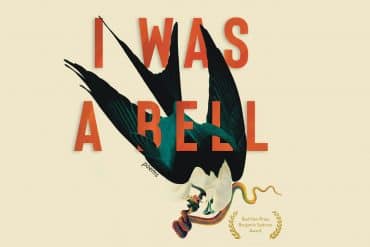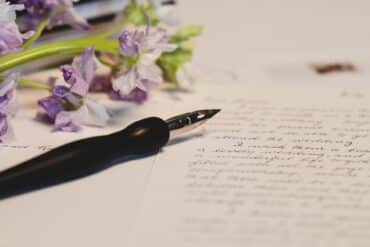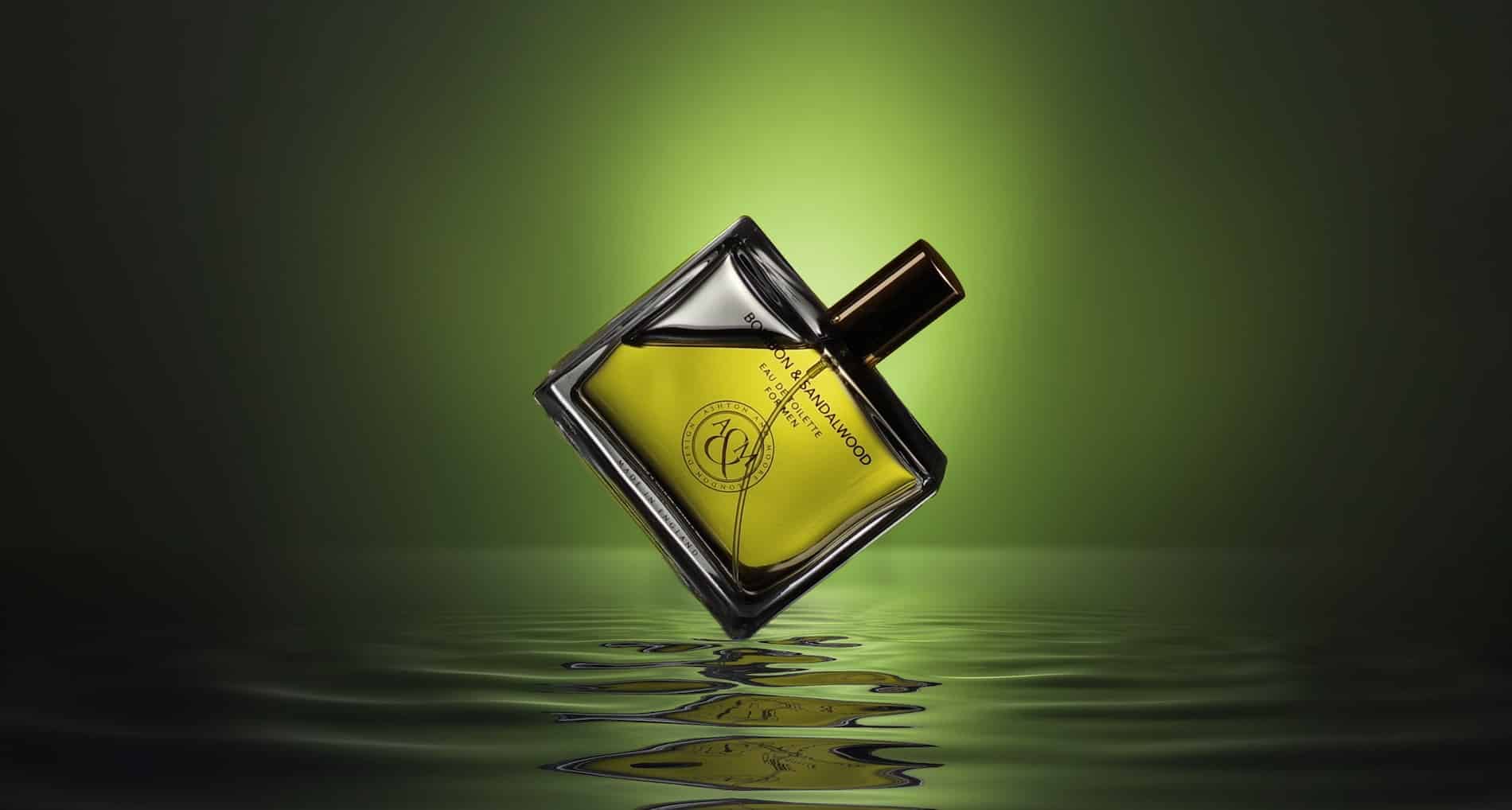As fragrance, and perfume in particular, has played a major role in the shaping of my writer’s voice, and participation in cultures of fragrance has had a major impact upon my identity, it is impossible to situate myself outside of these cultures. It is because of this privilege of “insider identity” within the global fragrance community and my natural inclination towards narrative research that I turned to autoethnography.
Part 1: Ages 4-11
Marlen traces his love of perfume back to his childhood.
Scent. I can vividly remember the smell of that shampoo that had a baby deer on its bottle. The bottle fascinated me because I had been learning to read and could clearly understand the letters “oz” next to the number 6. I had liked to consider that the oz on the bottle had something to do with my favorite movie at the time. I’m pretty confident that it was Avon’s Baby Shampoo, as my aunt had been selling Avon throughout the 70’s, but I recall a slightly musky scent, a honey-brown golden gel that was anything but gentle on my eyes. I consider this my very first scented memory, or at least the earliest one that I’m conscious of at this point in my life. Years later I would discover Santa Maria Novella’s Gold Musk (Oro Muschio) and suddenly be taken back as if on a time machine: I’m age 4, sitting in a tub with a wind up bath toy from Sea World – a skin diver in a blue suit with removable goggles – and a helmet of white foamy suds slowly dripping down my neck and back. I can feel the sting, smell the musk and taste the bitter cleanser as it inched down my face and dripped passed my lips.
Peering back at the vignettes of my childhood, searching for memories of scent, I find myself in the Blue Ridge mountains, in damp basements that smell of cedarwood, earth, mildew, and rain. I stand in Linville Caverns surrounded by the sweet aroma of moisture dripping from mineral-rich stalactites. I smell firewood crackling in a hearth and chlorine clinging to skin that had stayed too long in a swimming pool. I remember the smells of suntan lotion at the beach in Florida, synthetic coconut Coppertone, and scented markers that smelled of anything but the fruit and candy to which their names refer. I remember the smells of amusement parks and cookies, of my Nana’s friend Helen baking mandel bread in her Sunrise Lakes kitchen. I keenly recall having stepped in dog shit, and the gag-inducing smell of entering a bathroom stall where the toilet hadn’t been flushed. I remember an after school program at ages 5 and 6 where I rode and tended to horses, fed rabbits, and sucked in the odors of hay, manure, and leather saddles.
And then there were the scents of home – Carpet Fresh and Bounce dryer sheets; the smells of burnt cheese from the microwave and the slightly bitter, metallic odor of the freezer and ice maker; Zest and Irish Spring soaps, Disney’s bubble gum flavored toothpaste, and my mother’s Shalimar perfume. I think I only became aware of the fragrance of Guerlain’s most well-known creation at a slightly older age when it became customary to buy Shalimar soap as a Mother’s Day or birthday gift.
During these early years of my childhood, I had also liked to be creative. Painting, coloring, drawing, snapping a faintly sweet wad of Silly Puddy and crafting powdery, almost vanillic Play-doh into various forms were usual pastimes for me. I remember the dusty smells of construction paper and the waxy aromas of crayons that I now sometimes discover in scents that claim iris in their compositions. I remember being infatuated with scratch and sniff books, the ones that told some unimportant story but allowed for creative scented patches that would emit an odor after a fingernail had been sufficiently scraped against it. I hated the smell of the roses, marveled at the scent of lilacs, was confused by the odor of burning money, and felt disappointed by the aroma of chocolate. I thought that the interpretation of this last aroma was completely wrong and that the creators really could have done better. But what a perfect marriage of words and actual aromas.
Were other children as keenly aware of the scents that filled their lives, or was it only me? Was I really so aware of these smells at the time that I had encountered them, or is it only in retrospect that I discover the scented dimension of my experiences? I know I cannot answer such questions without the hazard of guessing and so I’ll guess that these phenomena must be partly a combination of both retrospection and actual experience. Did I smell Oro Muschio and needing a reference point, decide that the closest aroma in my experience was baby shampoo, or do the two truly share a close resemblance? I suppose the only importance of this comparison is the proof of how strongly smell has permeated my life and the immediacy and degree to which various aromas can elicit past experiences. I wholeheartedly concede that I’m not completely sure as to what are memories of true events as opposed to pieces of dreams, daydreams, and reconstructions of actual experiences, but again, it is the fact that aroma would come to play such a large role in my life that from here I must continue. So the question follows, “As my childhood progressed, did I seek out scented experiences or were my experiences naturally filled with olfactory abundance?”
Words. Words came easily when I was a child. They were everywhere around me, in songs to be heard and songs to be sung. They formed prayers silently read and could be used to both hurt and praise. I could play with words: I could scribble them in various groupings and make them perform tricks for me. They could be counted out into measured lines, made to rhyme, be taken apart and put back together with other words to create entirely new words. Writing in many ways felt like playing with paint where colors were substituted with the definitions, sounds, and shapes of words. The power of these words astonished me; the ways that people reacted to them often seemed incredible for I understood at a young age that words carried power and meaning. They were both tiny messengers and messages, and when written by my own hand or spoken by my own voice, they were even more unlike anyone else’s, though the same words could easily be used by anyone else and so were universal.
“What is a Mother? A mother is a swan…” and so my ode goes. Written at the age of 6 and completely of my own will in an attempt to trump Hallmark and create a Mother’s Day card, this little booklet made of construction paper and scented blueberry marker was but one example of the writer present within, already practicing his craft at a young age. Lucky to have been raised in a school system and during a time where written creative expression was an important part of developing a mind, I would continue to play with words, often preferring the freedom of storytelling to mere responses.
Part II: Ages 12-26
Marlen explores how his passions for words and scent merged.
Scent. Staring at the shelves packed from right to left, from top to bottom, I suddenly found myself excited. I had always been aware of perfume; the standard Father’s Day gift of Royal Copenhagen for Dad and the requisite birthday gift of Shalimar soap for Mom became family traditions. And yet, perfume had really played no part in my life so far. Sure, I could stand in the beauty aisle at Publix for a good 30 minutes sniffing shampoos and conditioners, hand soaps and room deodorizers, and never get bored. So much variety, so many different aromas. My soaps of choice at that time were the Bronnley soaps Mom sold in her store and I was in love with the scents of Prell, Finesse, and Vidal Sassoon shampoos. Loreal’s Studio hair gel was a sweet and non-floral alternative to the musky astringency of White Rain. I used to get giddy with excitement upon returning home from the supermarket and pulling out a new can of air freshener from the shopping bags, ready for any excuse to scent the air.
But now, at a small perfume shop in St. Thomas, U.S. Virgin Islands, I stood by as my mother picked out gifts for Aunt Anna, Barbara, Nana, and Grandpa. Of course she was getting herself Shalimar and something new in a round white bottle labeled Anais Anais, and Dad picked out a new scent, Azzaro. At age 12, as I marveled at the bottles lined up in front of my mother, she turned to me and asked for the first time, “Is there a fragrance that you’d like?”
I paused for a moment and felt slightly under pressure. “So many bottles, so many choices,” I thought. “Colors,” I finally replied. I remembered that my schoolmate April wore Colors and it smelled wonderful.
“Is that a men’s scent,” my mother asked the salesperson.
“I think…it’s unisex,” answered the woman behind the counter, hesitantly.
“Let me smell it,” my mother insisted. She sprayed it, sniffed it, and considered it before turning to me and asking, “This is the one you want?”
How could I know what I wanted? I had never smelled any of those bottles before. And now I was put on the spot to come up with something without getting much of a chance to really explore. “Yep,” I replied, nodding my head, “that’s the one.”
My mother agreed and just like that I owned my first bottle of eau de toilette, a 50ml pentagonal glass bottle with no sprayer. I now had my very own fragrance. So what if it was actually for women?
This process of purchasing fragrance would repeat itself over the next couple of days, and with each purchase came the accompanying free gifts, small samples of various men’s and women’s colognes, most of which would later be given to me to augment my growing interest in fragrance.
After my trip to the Virgin Islands, I found myself drawn to the men’s fragrance counters at Jordan Marsh, Belks, and Burdines. It was inevitable that at some point during the week my mother would end up shopping, and with me as her only companion, I would wander off to go sniffing while she tried on dresses in the fitting room. I discovered an amazing array of scents in a variety of bottles with interesting names that often made little sense to me. I found the men’s scents by Guerlain, the same company that made my mother’s Shalimar. There was Vetiver and Habit Rouge, and two others called Eau de Guerlain and Cologne Imperiale. A couple of these had an odd mashed potato smell that I came to recognize in yet a few other men’s scents. If I was lucky, the salesperson would give me a sample or two and my little collection slowly began to grow. At night, I would choose a sample from my collection to comfort me to sleep, scents like Oscar de La Renta’s Pour Lui or Bogart’s One Man Show and so started my habit of nighttime scenting.
It didn’t take long for me to become dissatisfied with my meager, but by typical 13-year old male standards, surprisingly large collection of fragrance samples, and so I stole one of the many syringes we kept in the house as back-ups for my grandmother’s insulin shots and started siphoning out small amounts of one scent to mix with another, wondering what would happen in my attempts to create something new. Safari got mixed with Diva. A little Colors with Poison. Some Habit Rouge and some Giorgio. I quickly learned that more often than not my creations were awful. It was strange, but for some reason, perfumes were not something that could be mixed to any good measure. I quickly abandoned this study but only a couple of years later my piano teacher at the time, Susan, would bring me her entire collection of scented oils upon learning that her protégé was also a budding aromatherapist.
At age 16, I would start my first part-time job. I had wandered through the local mall collecting applications for music stores and card shops. My mother was with me one evening when we passed the Wicks-n-Sticks, a franchised gift shop specializing in candles and scented products. There was a help wanted sign on the storefront window and so I entered to retrieve yet another application. The store owner was at the register and offered to talk about the position as he needed assistance right away. I agreed and my mother and I sat down to a conversation with Ron, an overweight, middle-aged man who at the end of our 20 minute conversation would offer me the job. I worked at Wicks-n-Sticks for the next 9 months, selling potpourri, designing window displays, learning how to light incense, and learning that people took scented wax very seriously.
The world of scent suddenly came alive to me and with the money I made from my job, I found myself turning my bedroom at home into a scented sanctuary, a place to escape from all of the misery that my adolescent self experienced. New age music and Spiritual Sky oils became my constant companions. I would light a stick or cone of Gonesh and exhale my sadness away.
Over the next ten years I would come to know all about the world of perfume, reading about it, collecting it, wearing it, creating it, and finally working in the retail industry. Friends would ask for suggestions. Family members would receive fragrance as gifts. And though I found many friends who also enjoyed perfume, my obsession for scent was largely in isolation; I hadn’t yet discovered a community of like-minded enthusiasts.
Words. How many times I opted to compose stories instead of essays, always eager to exercise a narrative voice over one detached from its subject. There was the epic of the kite at age 13 for my 8th grade English class, the poetry in high school, and the numerous short stories and “vignettes” throughout my teens and twenties. Words somehow seemed more my own and hence more powerful when the voice was also deeply mine, even if the character described by or speaking the words was not actually me.
I significantly developed both my wordplay and my voice when I started keeping journals, the practice of asking myself questions and trying to find answers through and in the writing. Questions about identity, relationships, decisions, and experience form the majority of my self-analysis and exploration. Often, my writing tells a story, sometimes fictitious, but more often biographical. At the age of 21, I found myself writing a vignette, a short sketch about a character named Orange Blossom. A day or two later came another vignette, and then another, until I had transcribed and developed them on a computer into the first thirty pages of what I considered at the time to be my first novel. Though the story was about a Chinese tea merchant, fragrance played a major role. The following excerpt illustrates the incorporation of my infatuation with fragrance into my writing, a move that I now believe to have had a profound influence on my later identity as the Perfume Critic.
In the following passage, the main character, Orange Blossom, receives a letter from her aunt who has learned of the death of Orange Blossom’s mother, Jasmine:
Then I realized what I had just been told. I thought about it, and began to cry. I wept, tears running down my face, dripping onto my tired hands. And then the wind began to blow. The wind and the tea bushes began to pat me on the back. And then I smelled it. I smelled your mother! I smelled Jasmine! She was in the air. She was in my tears. Strong and pungent. I turned toward the bushes where I had been working and began to pick at the leaves once again. But the tears kept coming. And they wet the leaves as I tore them from their branches. And in that hot afternoon sun, there came an odor from the basket of tear-moistened leaves. That fragrance was your mother. I can’t explain it, little one, but that afternoon I cried your mother.
Part III: Ages 27-33
Marlen discovers the significance of a name.
Scent and Words meet. “Why don’t you start your own blog?” she asked. The question had been raised a couple of times recently and though flattered, I felt that there were already too many blogs on fragrance and so dismissed the idea. Afterall, I was already writing for Now Smell This – what did I need a blog for? I was a community moderator and longtime contributor to Basenotes and had firmly established myself as the Scenteur, a username that I thought creatively addressed my love for scents.
I had been participating in numerous online communities – first I found a group of like-minded addicts at MakeupAlley – a site where I could trade all of the unwanted or unused bottles of fragrance I had collected throughout the years. After working at Nordstroms and Nieman Marcus department stores, I had accrued quite a collection. At the same time, I had also stumbled upon Basenotes, a site that unlike MakeupAlley, was used primarily by men. Access to these communities was significant in that I had finally found other people who were as interested in scent as I was, people I could both teach and learn from, and who were available to me anytime of the day, throughout the week, either through community forums or email. I had found a home.
Looking back, I’m both impressed but unsurprised that I would assert myself into these communities. Before moving to Japan, I had suggested to the coordinator of MakeupAlley that perhaps I could write some kind of column or feature. I was thanked for my enthusiasm and told, “Perhaps in the future.” I must have really wanted to experiment with writing because three years later, I would once again make such a proposal, but this time, I actually had an example of what I wanted to contribute – my very first column.
Basenotes was a very nurturing community. At first I was only another member, adding my reviews of fragrances to the database that formed most of the website, and then becoming an active participant in the growing online community, a relatively new feature for the (at that time) still fledgling site. After nearly a decade of sniffing, buying, selling, and swapping fragrances, I had developed somewhat of an expertise about perfume. I first exercised my authoritative voice by offering suggestions as to how to improve the community forums and by creating a beginner’s guide to fragrance, a kind of Perfume 101 that included information about common terms and phrases, vocabulary, and reference sites and resources. Whatever I had learned, I was eager to share with others. I was happy to see that my contributions were well received and appreciated.
The next step would be an offer to write for a new online fragrance blog. The owner had recently begun her own website where she offered news and reviews about perfumes and thought that perhaps she and I could create a regular dialogue, a “He says, she says” column. I was utterly flattered that she had liked my writing enough to consider it, and even more flattered that she should want to pay me for such writing. I immediately agreed and began enjoying my first paid writing gig as a perfume reviewer. Once this started, however, there was no stopping me. Finally, the ability to use both my writing skills and my experience in the fragrance world was becoming a reality.
A month or two later, having now moved up the Basenotes community hierarchy from a member to a moderator, a kind of community supervisor, and having already published a handful of articles for Now Smell This, I decided the time was right to re-visit the idea of a column. “Addicted: The Ramblings of a Fragrance Junkie” was the title and my first piece asked “When is it simply too much?” referring to my ever-growing collection of fragrances (numbering at the time around 1500 bottles, minis, and samples). The three pages of reader commentary in response to my column illustrated that I was not alone in my collecting behavior; other community members saw themselves in my writing and could relate to my question.
About three months later, I decided after an initial experiment in travel blogging to take the plunge and create my own fragrance blog. I was leaving so many comments at Basenotes and MakeupAlley that I thought it an exciting prospect to create a centralized place to post all future writing. I liked the idea of having my own space, designing and nurturing it to look and function as a representation of myself. When searching for a name for this blog, the conclusion seemed obvious. I would use my “name” and title the blog “Scenteur7”, the 7 having been added a couple of years prior when finding that Scenteur on its own was not available as a Compuserve email username. In January of 2006, Scenteur7 began and once again the reader commentary served as validation that this new direction was both welcomed and appreciated.
Summer of 2006, I’m sitting in a restaurant in Tampa, Florida, my longtime friend Melissa is with me and we’re having lunch with a small business owner I had met through Basenotes. Vijay introduces me to the owner of the restaurant as follows, “This is Marlen Harrison, he’s a perfume critic.”
“A perfume critic?” I pondered. I had never really thought of myself as that, but after pausing to consider it, the name certainly seemed apt.
“Nice to meet you,” I offered and shook the owner’s hand, “The Perfume Critic, that’s me.”
TO BE CONTINUED
AUTHOR’S MEMO
As fragrance, and perfume in particular, has played a major role in the shaping of my writer’s voice, and participation in cultures of fragrance has had a major impact upon my identity, it is impossible to situate myself outside of these cultures. It is because of this privilege of “insider identity” within the global fragrance community and my natural inclination towards narrative research that I turned to autoethnography. After all, in ethnography the researcher, and their interpretive eye, is as much a part of the research as are the subjects being examined. I think about my identity and the name I gave myself via an email address, a website, and professional pseudonym from 2006-2018 – Perfume Critic – and think that “the name” is a very good semiotic place to both begin and conclude. I AM a perfume critic. But how did I become one? How did I adopt this name for myself? What exactly does it mean to be a Perfume Critic, and what does my particular journey to this name reveal about the broader cultural semiotics of names? The above – my very first autoethnography, ca. 2007, written for an independent study in narrative research – answers the question, “How did I come to know myself as a Perfume Critic and what is the significance of this identity?”
Featured Photo by Saman Taheri on Unsplash










